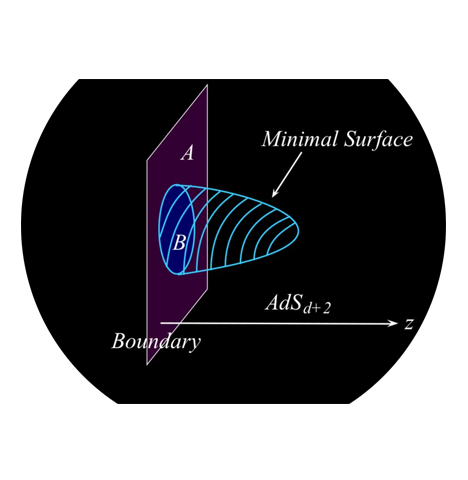Holographic Gravity
Center

Scaling Entropy-Area Thermodynamics (SEAT)
The Scaling Entropy-Area Thermodynamics (SEAT) framework, developed by Olivier Denis, represents a pioneering advancement in holographic gravity and entropy evolution, extending the holographic principle beyond AdS/CFT correspondence. Rooted in entropic information theory, SEAT posits that gravitational entropy scales with surface area rather than volume, revealing that spacetime, gravity, and entropy emerge from structured quantum information encoded on boundary surfaces.
SEAT proposes a fundamental unification of thermodynamics, quantum mechanics, and gravitational physics, demonstrating that the laws governing black hole entropy apply universally to all gravitational systems. It offers a novel resolution to the black hole information paradox by asserting that black holes evolve toward order, with information preserved and emitted as structured entangled Hawking radiation.
A Unified Framework for Quantum Gravity
SEAT extends and generalizes the principles established by Bekenstein, Hawking, and the Ryu-Takayanagi conjecture, providing a quantum information-theoretic foundation for the emergence of gravity. It is built on four key entropy formulations that link surface gravity, entropy, quantum entanglement, and thermodynamic parameters, allowing it to describe gravitational entropy as a function of structured boundary information.
The framework aligns with the Generalized Holographic Principle (GHP), which states that all physical processes within spacetime are fundamentally encoded as quantum informational degrees of freedom on boundary surfaces. SEAT postulates that gravitational curvature is a manifestation of entropy gradients, where quantum entanglement governs the geometric and thermodynamic properties of spacetime.
The Black Hole Information Paradox and Entropic Order
A key achievement of SEAT is its solution to the black hole information paradox. Traditional views suggest that black holes irreversibly destroy information. SEAT challenges this by demonstrating that black holes evolve toward order, where their entropy decreases systematically as they emit structured, information-preserving Hawking radiation.
This insight is supported by the holographic entanglement entropy framework, where the fine-grained entropy of black holes matches the entangled entropy of emitted radiation, ensuring that information is not lost but reorganized in an entangled quantum state. This aligns with von Neumann entropy and the Bekenstein bound, further reinforcing that black hole entropy follows a structured conservation principle.


Holographic Gravity and the Generalized Holographic Principle
SEAT extends holographic gravity by arguing that gravity is an emergent effect arising from structured information at boundary surfaces, rather than a fundamental interaction. This perspective aligns with Verlinde’s emergent gravity model, but SEAT diverges by emphasizing that entropic order at boundaries dictates the dynamics of spacetime curvature and gravitational interactions.
Through entropy-area scaling, SEAT connects the Ryu-Takayanagi conjecture with gravitational fine-grained entropy, proposing that all gravitational systems obey the same entropy principles governing black holes. This broadens the reach of quantum extremal surfaces (QES) beyond AdS/CFT, embedding non-perturbative quantum corrections into gravitational entropy.
Conclusion: SEAT as a Foundation for Quantum Gravity
The Scaling Entropy-Area Thermodynamics (SEAT) framework offers a groundbreaking perspective on the emergence of gravity, entropy evolution, and spacetime structure. By demonstrating that entropy is a function of boundary-encoded information, SEAT unifies the principles of thermodynamics, quantum mechanics, and gravitational physics into a coherent informational paradigm.
SEAT provides an entropic foundation for holographic gravity, suggesting that spacetime curvature and gravitational effects arise from quantum informational interactions at boundary surfaces. With strong mathematical consistency, SEAT establishes a robust framework for quantum gravity, resolving key paradoxes while offering testable predictions for future exploration.
By revealing an emergent entangled informational universe, SEAT not only advances the holographic principle but also positions information as the fundamental building block of reality, shaping spacetime and governing gravitational interactions.
